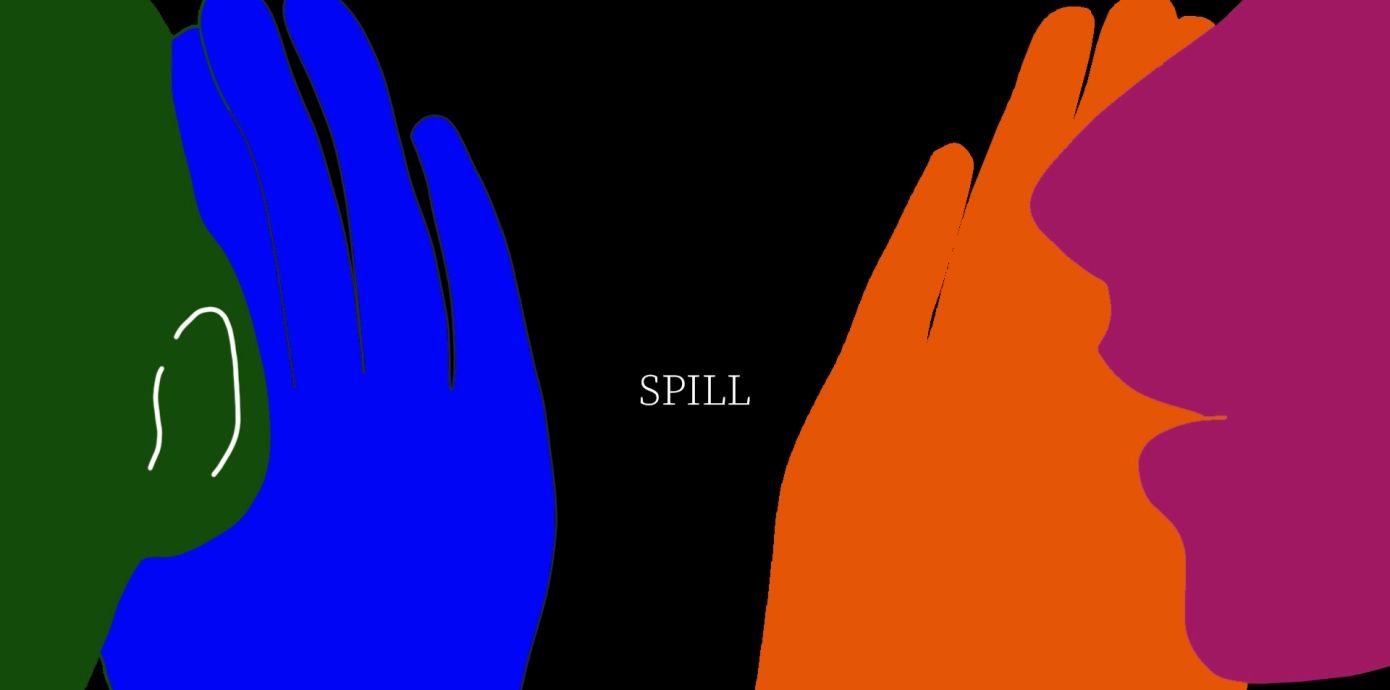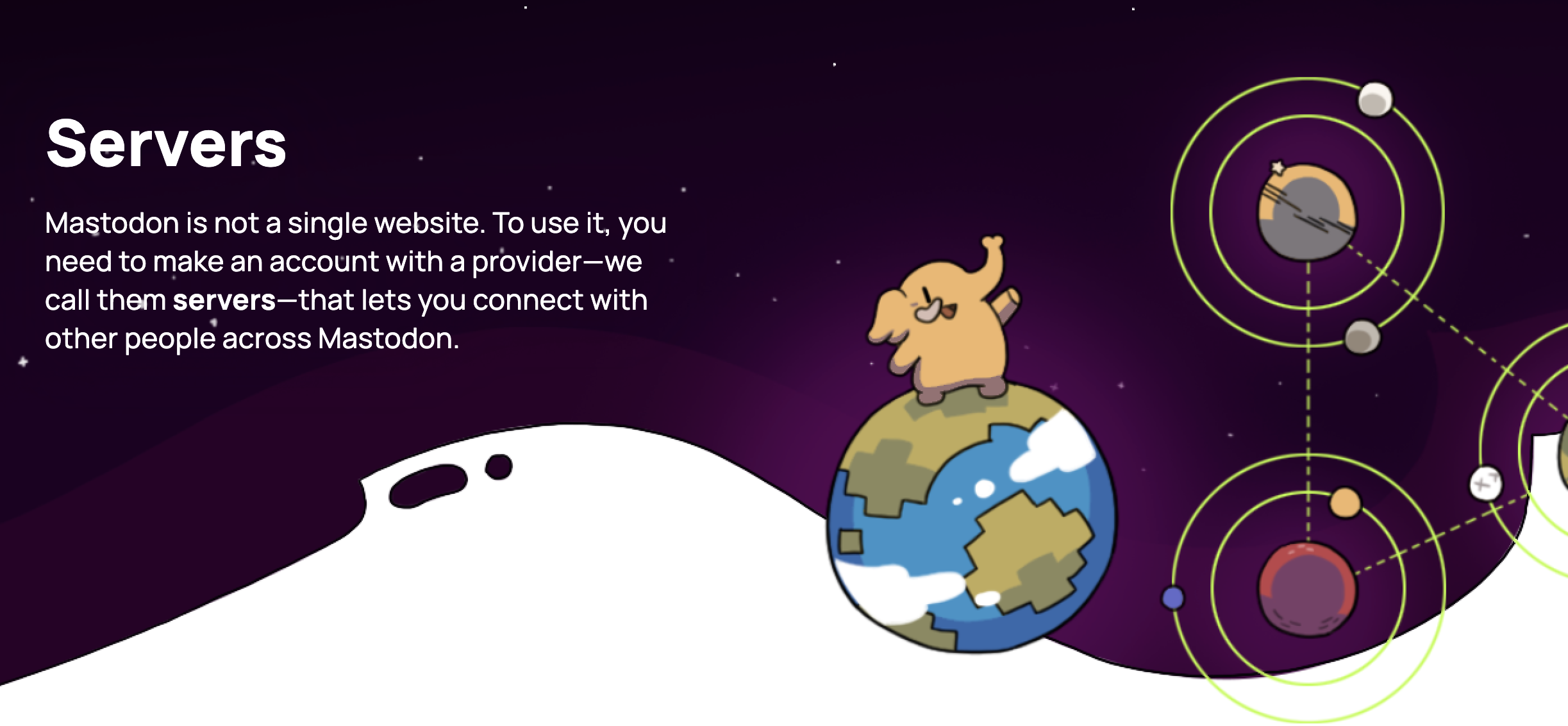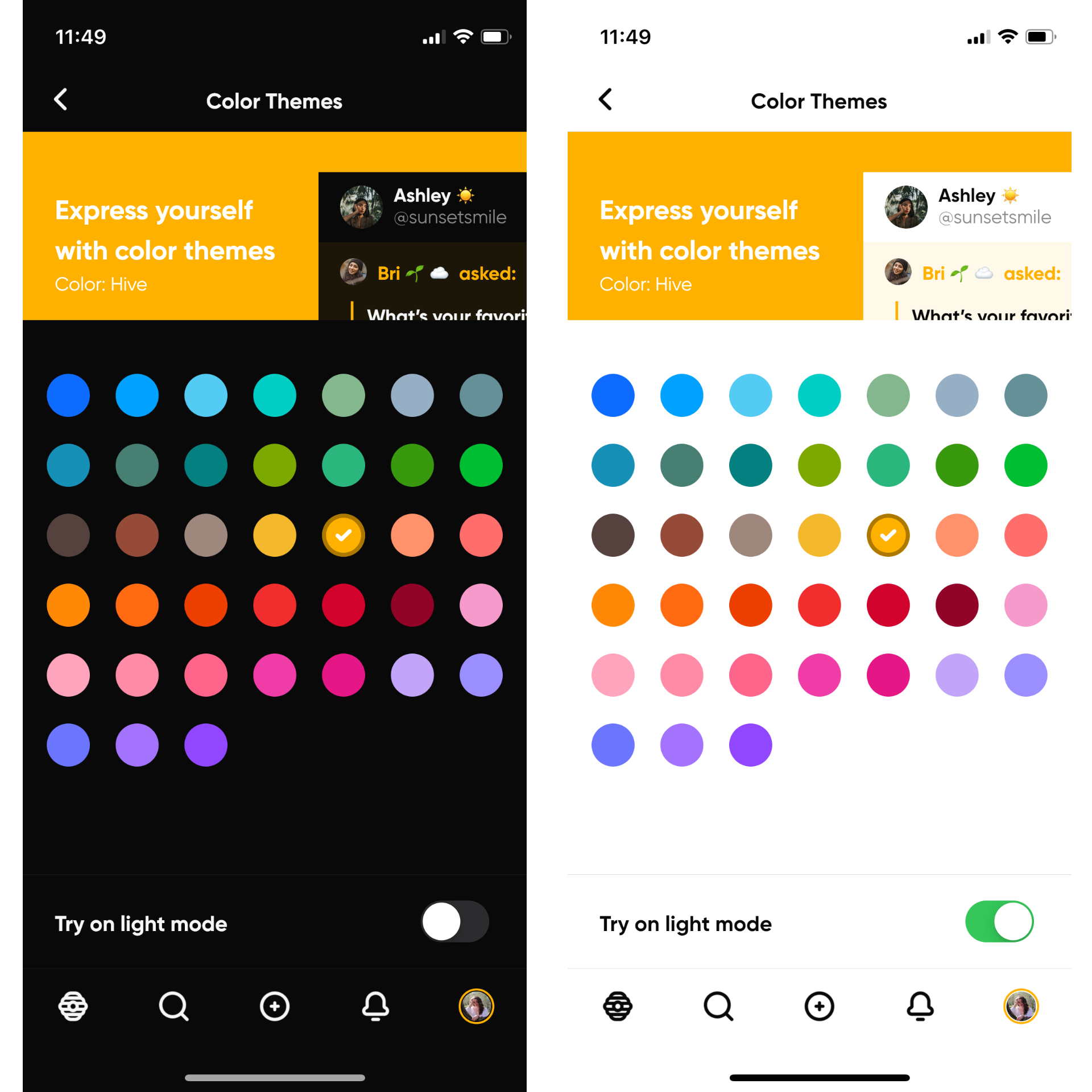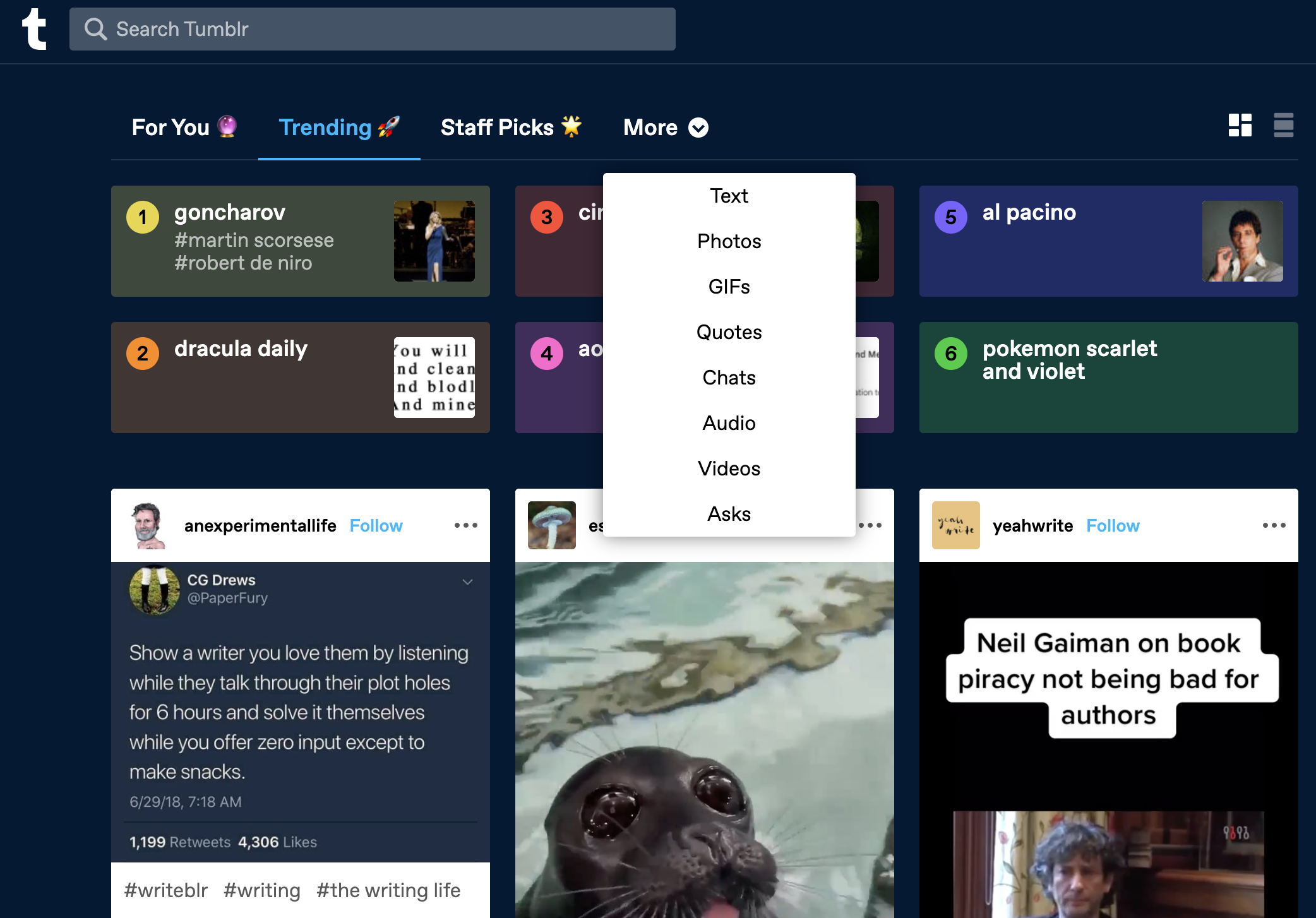6 Twitter Alternatives to Try if Twitter Actually Gets Shutdown
Is Twitter going away forever? We're not sure yet, but as the future of Twitter gets more uncertain, it's a good idea to start looking at alternatives. In this article, I list six Twitter alternatives that you might like, depending on your Twitter use habits.

If you've been on Twitter at all in the last couple of weeks, you know that morale is pretty low. #TwitterShutdown and #RIPTwitter have been trending this week and the timeline is cluttered with people plugging their Instagram and TikTok accounts and saying goodbye to their mutuals.

Between the continuing layoffs and resignations at Twitter HQ and brand trepidation around spending their ad budget amidst all the uncertainty, the future of Twitter has never been hazier. If Twitter does go down as some users (and ex-employees) are predicting, what Internet watering hole can we congregate at next?
There's no 1:1 Twitter replacement just yet, but there are a few alternatives that you may like depending on what you used Twitter for:
- If you were on Twitter for the culture (and the tea), try Spill
- If you were part of a niche community on Twitter, try Mastodon
- If you were on Twitter for political discourse and news, try Tribel
- If you loved the multimedia aspect of Twitter, try Hive Social
- If you posted your art, fan cams, or aesthetics on Twitter, try Tumblr
- If you engaged with consumers and other brands on Twitter, try LinkedIn
Here's the break down.
Twitter Alternative No. 1: Spill
Spill is the creation of two former Twitter employees, Phonz and Devaris Brown, who wanted to make a platform that answers the modern challenges of social media. According to the founders, they're "building Spill to make it easier, safer, and more rewarding to get to [the best social media] experience, as well as introducing new ways to connect through real time conversation."

Making Spill the go-to place to share memes, start dialogues, and spill the tea means innovating beyond just "Twitter 2.0." Plans for the platform include using AI for better moderation and user support and crediting creators using blockchain technology to create public records of posts.

Here are a few of the things you'll be able to do on Spill when it launches as promised by the developers:
- Create, comment, amplify, or share random thoughts called "Spills"
- Host in-app chat events, virtually and IRL
- Keep up with what's going on globally
- Get paid automatically if your Spill goes viral
As of the writing of this, Spill isn't available, however you can sign up for the wait list and request your preferred handle before the site's alpha launch goes live in January 2023.

To reserve your handle, go to spill-app.com/reserve and fill out the simple survey.
Twitter Alternative No. 2: Mastodon
Like many of the alternatives I'll be talking about in this article, Mastodon has seen a huge influx of users in the last few weeks. The decentralized, ad-free platform has been around for several years, but with all the changes since Elon Musk took over as CEO, it's been looking a lot more appealing.
Part of what makes it such a good alternative is the way Mastodon focuses on niche communities. See, it's not one big platform, like Twitter. Instead, Mastodon is a decentralized collection of many, many different servers, each catering to a specific community or interest. If you loved Twitter because of the tight-knit community of artists, writers, engineers, or fellow fans you tapped into, Mastodon might be the right fit for you.

If that all feels a little overwhelming or if your chosen server isn't accepting new accounts right now, you can just do what I did and join a general purpose server, then follow accounts from other niche servers to curate your feed. You can also create your own server to fill a gap or create a unique community for your industry or customers.

While the basic posting (called "Toots") and scrolling functionality is similar to Twitter, much of what makes Mastodon different also contributes to the learning curve for getting comfortable on the platform. If you're used to Discord or other chitchat servers, you might have a leg up getting to know this platform.
My advice: Set up your account on desktop, not mobile. It's a more robust and intuitive user experience. And don't forget to share your new Mastodon handle and invite link on Twitter as you're bidding the platform a fond farewell so your mutuals can find you on your new server.
Twitter Alternative No. 3: Tribel
More than most other social media channels, Twitter has long been a forum for political discourse and a platform for political figures and activists to engage with users. Lately, the growing concerns of misinformation has led some users to look elsewhere for their political news and engagement. Tribel is one of those elsewheres.
According to Tribel's Twitter account (which has been savage recently, by the way), the app is "an innovative pro-democracy Twitter alternative that’s free of hatred & fake news." Plus, they have an edit button.

Tribel has been marketing itself to progressives who are tired of what Twitter has become, but news and politics isn't the only type of content people are posting on the platform. Instead of hashtags, Tribel has an extensive content targeting system in place to better help your content reach the audiences that want to see it.
When writing a post in Tribel you can choose from the long list of options under the "Select Audience" drop-down menu. You also have the option to set your post privacy settings to Public, Friends Only, or Only Me.

That's not the only part of Tribel that's highly customizable. When you set up your Tribel account, you choose which feed you want on your homepage from the options of: Friends, Following, Breaking, and Trending.

You're not stuck with just that one feed, though.
From your homepage, you can tab between the different feed options. And remember those audience categories from the post settings? You can filter any of your homepage feeds by those audience categories by selecting/excluding individual categories or choosing your Favorites (a set of categories you've previously defined).

It's an incredibly curated experience, which I hope means less doom scrolling and more mental health breaks to look at cute kittens.
Twitter Alternative No. 4: Hive Social
Hive Social seems to be the everything app that Elon Musk promised he would turn Twitter into: you can send short text posts, upload photos and videos, use interactive features like polls and Q&As, and even stream music all in one app. Like Tribel, the interface also has a similar feel to Twitter, so it's a pretty seamless transition.
Not only will the Hive features feel familiar to Twitter users, in many cases they're more robust than the Twitter version of the same. Take the color themes, for example: Hive offers users 38 different color themes to choose from, compared to Twitter's six.

Plus, Hive also has the coveted edit button that Twitter has withheld from us for so long. No extra charge, either.
One unique feature that sets Hive apart from other Twitter alternatives is the new profile music feature. You can connect your Spotify or Apple Music accounts and choose a song to pin to your profile. Autoplay is optional for anyone still harboring latent trauma from their MySpace days.

For an upcharge, you can add three extra slots to have up to four songs in rotation on your profile.
Hive is not a perfect replacement, of course.
Like many of these Twitter alternatives, Hive is experiencing a huge surge in users and sometimes the app can be laggy or buggy as the developers try to keep up with the new demand on their servers. They also have not yet implemented alt text for images and GIFs, which is an accessibility concern, although it may be a functionality they're planning to add in.
Finally, there is no desktop experience for Hive yet, only mobile for Android and Apple. If you're a mainly desktop Twitterer, that might be a dealbreaker.
Twitter Replacement No. 5: Tumblr
Yes, Tumblr's still around. As it turns out, the rumors of Tumblr's death have been greatly exaggerated. The site is still up and running and regaining popularity with both old users who migrated to Twitter and new users alike.
Tumblr has always had more of an aesthetic feel to it than other social media sites — the timeline is a collage of images, GIFs, videos, and text posts. That sort of interface lends itself well to sharing original and curated creative content. If you're not into that, though, Tumblr gives you the ability to filter your timeline by post type:

A new feature that Tumblr's added is "Blaze." After publishing a post, you'll see the Blaze button as an option. If you click on it, there are several pricing tiers to choose from to boost your post's impressions with a cap of an estimated 50,000 impressions for a whopping $150.

Where Blaze differs from other post boosting features is that it doesn't seem to have been created with marketing in mind. According to the feature's FAQs, there's no audience targeting at all — your blaze is just shown to accounts at random, without consideration for followed tags/accounts or user behaviors. Which makes sense, since there isn't much of a brand presence on Tumblr.
That means it's mostly individuals using this feature which has led to some creative sh*tposting:

At the end of the day, Tumblr doesn't have much of an ad revenue stream and most people don't pay for Tumblr premium, so this is a fun way for the community to help underwrite the cost of running the website without turning Tumblr into another targeted ads hellscape.
Twitter Alternative No. 6: LinkedIn
You might be thinking, no one's actually flocking to LinkedIn as a replacement for Twitter, right? But you might be surprised.

If you're a brand, you likely already have a company LinkedIn page (and if you don't, you should). If you're an individual creator, though, you might not have ever jumped on the LinkedIn bandwagon. Or if you did, you only ever log on when you're looking for a new job.
LinkedIn takes a lot of heat for being a cringey, insincere platform where everyone just monologues about their "hustle and heart." But it is still a great place to network, especially if you're bringing in connections you've already made on Twitter.
With all that said, it's hard to believe that Twitter might actually go down.
Even as I was writing this article, I was embedding Tweets instead of taking screenshots of them until I realized — if Twitter actually breaks, those embedded Tweets will just be broken html code. Love it or hate it, Twitter has been a staple of the online ecosystem for so long that it feels impossible that it might not be there some day, particularly some day soon.
But if that day does come, hopefully these alternatives will help you preserve the community and connections that made Twitter a place you wanted to spend your time.
For more creator news and resources, check out our Resource Library or visit our YouTube Channel.









